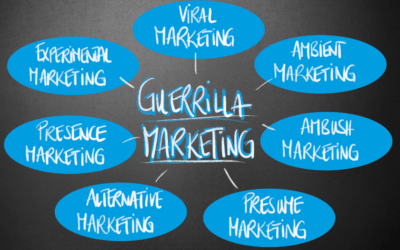Words create reality. They shape our relationships, our businesses, and the way we engage with the world. In a digital-first landscape, where communication happens across screens long before handshakes, language isn’t just important—it’s foundational.
If you’ve ever sent an email that landed the wrong way or struggled to articulate your brand’s value in a way that resonates, you’ve experienced the power and pitfalls of language. Success with language is never just about what we say; it’s about what people hear, interpret, and act upon.
From Transactional to Transformational Communication
For many businesses, communication is viewed as a means to an end—a way to generate leads, close deals, or drive conversions. But the most successful brands go beyond this transactional approach. They believe that language is more than a tool for selling; it’s a foundation for building meaningful, long-term relationships.
Authentic language does more than push a product or service; it creates connection, trust, and loyalty.
Transactional communication is about immediate exchange:
- “Sign up now for 20% off.”
- “Limited-time offer—act fast!”
- “Our service is better than the competition because…”
These messages are not wrong; there is a time and place for them. But if all your communication is purely transactional, you risk being forgettable. Transactional language gets the job done in the short term, but rarely builds brand affinity or inspires advocacy. When your’es selling a commodity product (say, nails), this concept is really key to get. Transactional communication is not going to get you loyalty from customers.
Transformational communication, on the other hand, fosters relationships:
- It acknowledges the audience’s needs, desires, and concerns.
- It provides value beyond just making a sale.
- It invites conversation and builds a sense of shared purpose.
A transformational message sounds more like this:
- “Here’s how we help people like you solve [problem]—let’s explore whether it’s the right fit.”
- “We believe [value or mission], and here’s how it shapes the work we do.”
- “We’re here for the long haul, not just today’s transaction.”
How Digital Language is Evolving
Language is always evolving, and in the digital age, the pace of change is faster than ever. Social media, AI, search algorithms, and shifting audience expectations have reshaped how businesses communicate.
For brands, the pressure to keep up with trends can feel overwhelming. Should you embrace ultra-casual, meme-driven marketing? Do you need to master short-form video scripts? What about AI-generated copy? Should you use it, avoid it, or find a middle ground?
Rather than blindly following trends, the key is to choose communication styles that highlight your strengths and successfully engage your audience. You don’t have to chase what’s “hot” if it doesn’t align with your brand. A new style is worth exploring only when it helps you communicate better. You may even consider hiring someone who can execute it effectively.
Key Shifts in Digital Language
From Corporate-Speak to Conversational Messaging
Not long ago, business communication was defined by formality. Think rigid press releases, robotic email copy, and websites filled with industry jargon. Today, audiences expect brands to communicate with a more natural, conversational tone.
That doesn’t mean every business should adopt a casual, emoji-filled style. The goal isn’t to mimic digital trends, but to be human—to make communication clear, accessible, and engaging in a way that fits your brand voice.
Shorter, More Dynamic Content
With shrinking attention spans, digital content is getting shorter. Micro-copy, snappy headlines, and quick-hit insights are winning the engagement game. But this doesn’t mean long-form content is dead. It just means that each piece of content must earn its place. If your brand thrives on brevity, master the art of impactful, concise messaging.
On the other hand…
Is long-form, in-depth content more aligned with your brand or, more importantly, with the needs and expectations of your readership? If so, lean into that, regardless of so-called trends—just make sure your structure is engaging and scannable.
The Rise of AI-Generated Language
AI tools like ChatGPT are reshaping content creation, enabling businesses to generate copy faster than ever. With AI’s rise comes a critical challenge: authenticity. Generic, AI-generated content won’t stand out. It takes human refinement to make language compelling, nuanced, and brand-aligned.
If AI saves time, use it, but don’t let it replace the unique voice and perspective that set your business apart. Your brand’s language should feel intentional, not automated.
Visual Language & Nonverbal Communication
Words don’t exist in isolation, and in the digital world, the way you format, present, and pair text with visuals matters just as much as the words themselves. A well-placed emoji, a strategic use of white space, or a compelling infographic can say more than a paragraph of text.
If your brand voice is strong in writing, focus on refining your visual presentation. If visuals are your strength, lean into multimedia storytelling and let words play a supporting role.
Your Words = Your Business’s Reality
If the world is held together with language, then the businesses that communicate with clarity, purpose, and authenticity will be the ones that thrive. The key is intentionality—knowing what you want to say, who you’re speaking to, and how you want them to feel.
Cultural architect and language expert Jean Lloyd, founder of the iCommunicate Summit, agrees. She believes that all relationship is created first in language and that marketers should think in terms of creating relationships: “When beginning a relationship with a customer or anyone else, the skillful use of language isn’t about trying to force an outcome, or manipulate the person. When you can just communicate freely, instead of being hell bent on advancing an agenda; then you’re at the seat of creation. In that space, there’s only you and them, and love arises – and only in that moment can you create.”
While Jean Lloyd’s take may sound metaphysical, it in fact speaks to the elemental nature of human communication–how people give and receive thousands of daily messages from the people (and brands) all around us. In a world where automation, AI-generated content, and mass messaging are the norm, transformational communication actually stands out.
So, the next time you draft an email, write a blog post, or plan your marketing strategy, remember: you are not just filling space. You are shaping perception, building relationships, and reinforcing the very foundation of your business. Are you using the styles that bring out the best in your business? Or are you chasing trends that aren’t quite a fit while taking up time and resources?
The Bottom Line: Be Strategic, Not Trend-Driven
There’s no one-size-fits-all approach to digital language. Instead of trying to follow every new style, focus on what helps you communicate at your best:
✔ Know your strengths—lean into the language and format that work for you.
✔ Know your audience—adapt only when it enhances engagement and connection.
✔ Know when to delegate—if a new style is necessary but outside your expertise, hire someone who can execute it well.
The evolution of digital language isn’t about keeping up—it’s about staying true to your voice while making sure your message lands with the right people.














